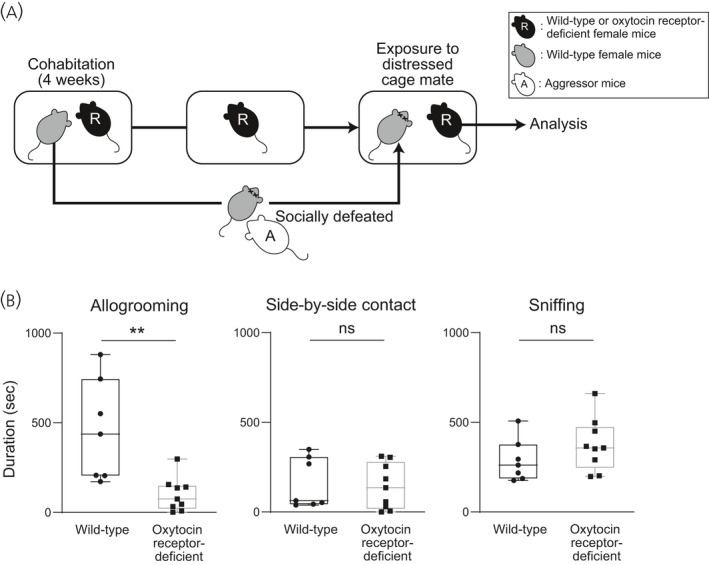FIGURE 9.

Effects of oxytocin receptor deficiency on durations of allogrooming, side‐by‐side contact and sniffing behaviours toward distressed cage mates in wild‐type and oxytocin receptor‐deficient female mice. A, Scheme of the behaviour test. Pairs of resident test mice (R, wild‐type or oxytocin receptor‐deficient mice) and cage mates were housed in cages for 4 weeks. After 4 weeks, cage mates were removed from their home cages, kept isolated overnight, and then returned to their previous home cages. Resident test mice were exposed to cage mates that had been defeated by aggressor CD1 mice (A). B, Times spent for allogrooming, side‐by‐side contact and sniffing behaviours toward distressed cage mates of wild‐type and oxytocin receptor‐deficient female mice. The duration of allogrooming behaviour toward defeated cage mates was significantly shorter in oxytocin receptor‐deficient females than in wild‐type females, suggesting that deficiency in the oxytocin receptor blocked allogrooming behaviour toward distressed cage mates. The numbers of wild‐type and oxytocin receptor‒deficient females were 7 and 9, respectively. The maximum, upper quartile, median, lower quartile and minimum values are shown. **P < 0.01 vs wild‐type females (Mann‐Whitney U test). NS, not significant
